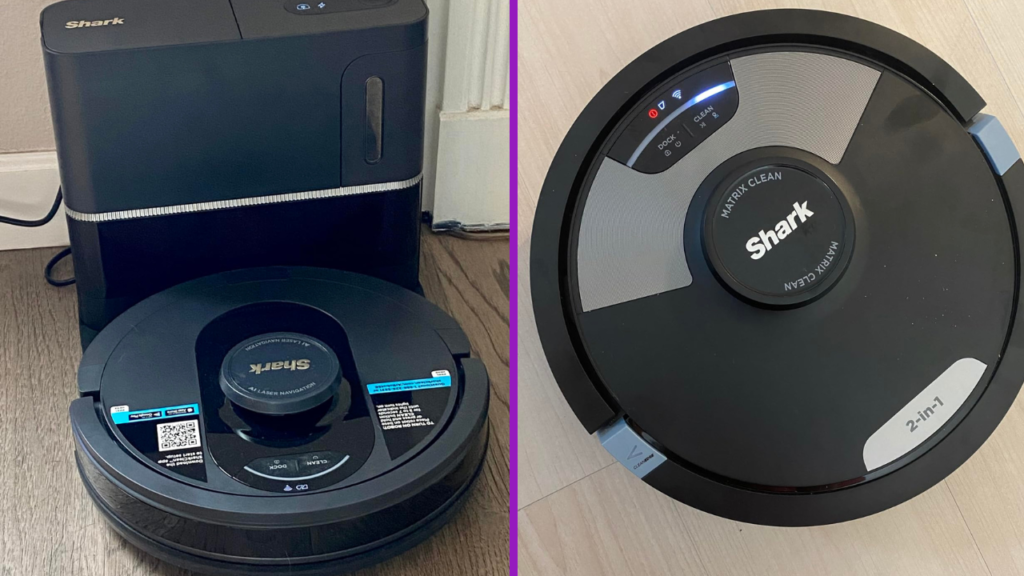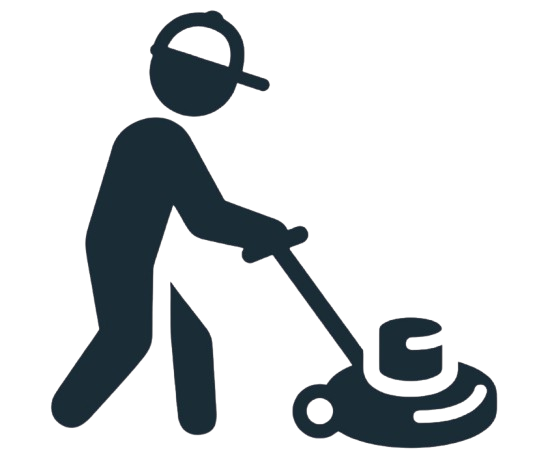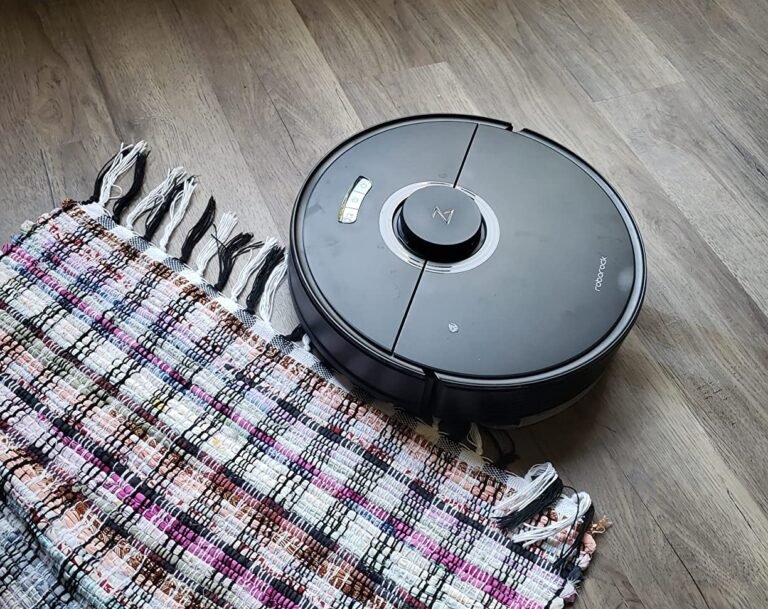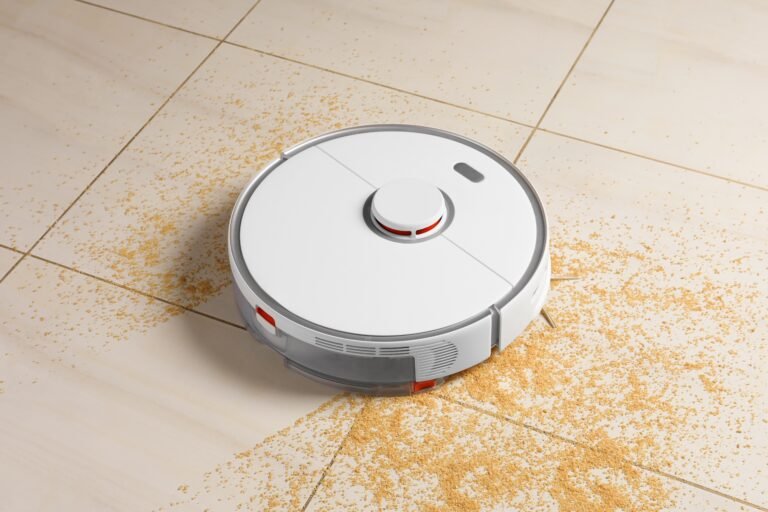In recent years, robot vacuums have transformed from novelty gadgets into indispensable household helpers. Once limited to basic cleaning, today’s robot vacuums are powered by groundbreaking technology and packed with features that cater to the needs of modern, fast-paced lifestyles. As advancements in artificial intelligence, mapping, and smart home integration accelerate, robot vacuums are now capable of far more than simply picking up dust. They can navigate complex floor plans, avoid obstacles, clean specific zones, and even empty their bins—all with minimal human intervention.
This article will explore five game-changing features that set today’s top robot vacuums apart. These innovations are redefining the role of vacuum cleaners in the home, making them smarter, more autonomous, and incredibly effective. Whether you’re a long-time user or considering your first robot vacuum, these standout features will help you find a model that aligns with your needs. Let’s dive into the must-have features shaping the future of home cleaning and making robot vacuums an essential part of modern living.
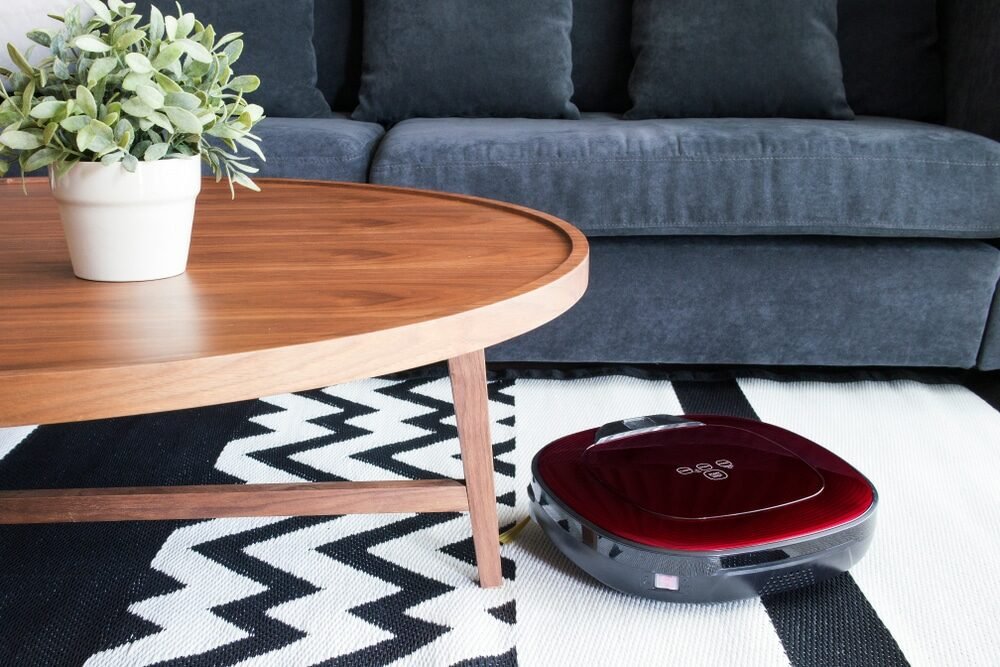
1. Smart Mapping and Navigation
One of the most revolutionary features in today’s top-tier robot vacuums is smart mapping and navigation. This technology has transformed how robot vacuums operate, moving them from the era of random cleaning patterns to a world of precision-guided, highly efficient cleaning routines. Early robot vacuums often moved in randomized patterns, resulting in missed spots and wasted time. But thanks to advancements in smart mapping, modern robot vacuums now use sophisticated sensors and mapping technology that allow them to understand, remember, and navigate your home with accuracy and efficiency.
Here’s an in-depth look at how smart mapping and navigation work, the different technologies involved, and why they’ve become a must-have feature for any high-quality robot vacuum.
How Smart Mapping Technology Works
Smart mapping technology enables robot vacuums to create a virtual floor plan of your home, ensuring every corner is covered while avoiding redundant passes. Today’s best models use a combination of LIDAR sensors, SLAM (Simultaneous Localization and Mapping) algorithms, and camera-based navigation to gather detailed information about the environment.
- LIDAR (Light Detection and Ranging): LIDAR sensors emit laser beams that bounce off walls, furniture, and other obstacles, allowing the robot to map out an area with remarkable accuracy. LIDAR is particularly useful for creating detailed maps in real time, enabling the robot to follow a systematic cleaning path rather than a random one.
- SLAM (Simultaneous Localization and Mapping): SLAM technology allows a robot vacuum to understand where it is in a room and where it has yet to be cleaned. It’s the backbone of intelligent navigation, helping the robot constantly update its location as it moves through space.
- Vision-Based Navigation (Cameras): Some robot vacuums are equipped with cameras to “see” and identify objects in the environment. These cameras can detect furniture, walls, and even smaller objects like pet bowls, which the vacuum can then avoid. Vision-based navigation is often paired with machine learning for advanced object recognition, ensuring the vacuum navigates more naturally around obstacles.
Key Features of Smart Mapping
- Real-Time Mapping and Cleaning Path Optimization
Robot vacuums with smart mapping can visualize the layout of your rooms and plan efficient cleaning paths accordingly. Real-time mapping allows the vacuum to detect changes in the environment as they happen—such as moving furniture or an unexpected obstacle. This capability prevents wasted time and ensures that each area is cleaned systematically. - Room Recognition and Zone Cleaning
With advanced mapping, robot vacuums can identify specific rooms and even recognize different types of flooring within a home. This allows for zone cleaning, where users can set up virtual boundaries, like no-go zones, or schedule the vacuum to clean only specific areas or rooms. Zone cleaning is incredibly helpful for targeting high-traffic areas or avoiding sensitive spaces, such as a pet’s feeding area. - User-Controlled Customization
Many smart robot vacuums connect to a smartphone app that lets users view the virtual map of their home and customize the cleaning experience. Users can label rooms within the app, create cleaning schedules for each room, and establish restricted areas that the vacuum should avoid. This level of control means that you can instruct the vacuum to focus on specific rooms at specific times, such as cleaning the kitchen every evening after dinner. - Multi-Floor Mapping
A standout feature for homes with multiple stories is multi-floor mapping. Certain robot vacuums can recognize different floors within the same home and store separate maps for each. Users can set up unique cleaning routines for each floor, saving time and maximizing the vacuum’s efficiency. This is a particularly valuable feature for multi-level homes where different floors may require varying cleaning frequencies. - Memory and Learning Capabilities
Many modern robot vacuums can store the layout of your home, reducing the need to remap each time they start a cleaning session. Over time, some vacuums learn patterns and user preferences, allowing them to refine their cleaning approach. For instance, they might learn to avoid common obstacles, like chair legs, or spend more time on frequently used areas, like entryways.
Benefits of Smart Mapping and Navigation
- Enhanced Cleaning Efficiency
By creating and following precise cleaning paths, robot vacuums with smart mapping technology can cover more ground quickly, delivering a thorough clean with fewer missed spots. The result is a faster, more efficient cleaning cycle that requires fewer battery charges and less human intervention. - Reduced Battery Waste
Intelligent mapping reduces battery waste by ensuring the vacuum avoids unnecessary re-cleaning areas. This is particularly useful in larger homes, where a robot vacuum’s battery life is critical. By taking a systematic approach, these vacuums can reserve battery power for areas that genuinely need cleaning, often returning to their base to recharge if necessary. - Greater Flexibility and Control for Users
The customizable nature of smart mapping allows users to adapt the vacuum’s behaviour to fit their lifestyle. For instance, you can set the vacuum to clean the living room during the day but avoid the bedroom until the evening. This flexibility gives homeowners control over how and when their vacuum operates, leading to a truly personalized cleaning experience. - Improved Object Avoidance and Safety
Mapping and navigation technology also improve the vacuum’s ability to detect and avoid obstacles. With sophisticated sensors and real-time feedback, a mapped robot vacuum can navigate around furniture, cables, and pet bowls without getting stuck. This means fewer interruptions and a more reliable clean, even in cluttered or dynamic environments.
Why Smart Mapping is a Game-Changer
Smart mapping has truly redefined what robot vacuums are capable of, transforming them from basic cleaning machines into efficient, adaptable cleaning assistants. It allows these devices to take on tasks that previously required human supervision, saving users time and energy. With a mapped-out cleaning strategy, robot vacuums can tackle homes of any size and complexity, ensuring a higher standard of cleanliness without constant adjustments or manual intervention.
As mapping technology continues to improve, we’ll likely see even more advanced capabilities in robot vacuums, including faster and more accurate map generation, real-time updates, and potentially deeper integration with other smart home devices. For now, though, smart mapping and navigation stand as one of the most significant advancements in robot vacuum technology, enabling users to enjoy a cleaner home with less effort than ever before.
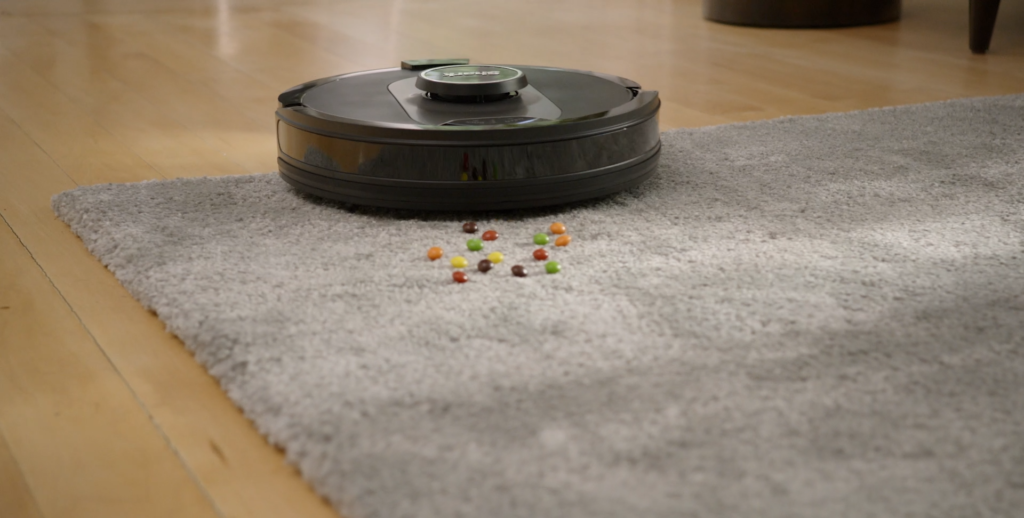
2. Self-Emptying Bins
Self-emptying bins are a groundbreaking feature that has redefined the convenience and usability of robot vacuums. Traditionally, one of the drawbacks of robot vacuums was the need for regular maintenance, particularly when it came to emptying the dustbin. For busy households, pet owners, or allergy sufferers, this frequent maintenance could detract from the benefits of owning an automated vacuum. Enter the self-emptying bin, a feature that has revolutionized the market by drastically reducing the need for hands-on maintenance.
Robot vacuums with self-emptying capabilities come with a specialized docking station that recharges the vacuum and automatically transfers the collected debris from the robot’s internal dustbin into a larger bin at the base station. This innovation allows the robot vacuum to clean continuously over days or even weeks without manual intervention. Let’s look closer at how self-emptying bins work, their benefits, and why they’re becoming an essential feature for many users.
How Self-Emptying Bins Work
Self-emptying robot vacuums have an advanced docking station that acts as a combined charging base and debris disposal unit. Here’s a breakdown of the process:
- Cleaning Cycle Completion
When the robot vacuum completes a cleaning session or its internal dustbin reaches capacity, it returns to its docking station. This system is often fully automated, meaning the vacuum detects when it’s full or has completed its task and autonomously returns to the dock. - Automatic Emptying Process
At the docking station, a powerful suction mechanism transfers debris from the robot vacuum’s internal dustbin to a larger bag or bin in the base station. This process typically takes just a few seconds, with the base station’s suction system pulling out dust, dirt, hair, and other debris from the vacuum and storing it securely in a sealed bag or bin. - Storage in a Large Dust Bag
The docking station holds a much larger dust bag or bin than the robot vacuum, allowing several weeks of debris storage. Depending on the size of your home, the frequency of cleaning, and the amount of dust and debris, some self-emptying systems can hold up to 30 or even 60 days of waste before requiring emptying or a bag replacement. - User Notification and Disposal
Most self-emptying robot vacuums are connected to a smartphone app, which notifies users when the base station’s dust bag or bin is full and needs to be emptied. This setup reduces the frequency of hands-on maintenance from every few days to once every few weeks.
Benefits of Self-Emptying Bins
The self-emptying bin feature provides several key benefits that have made it a game-changer in the robot vacuum industry:
- Minimal Maintenance, Maximum Convenience
The most significant advantage of self-emptying bins is the convenience factor. With traditional robot vacuums, users often had to empty the small internal dustbin after each cleaning session or even multiple times if the vacuum was used in a high-traffic area. Self-emptying models eliminate this need, allowing the robot to clean independently for extended periods without user intervention. This feature is especially beneficial for those with busy schedules or anyone who wants a “set it and forget it” approach to cleaning. - Ideal for Pet Owners
Pet owners know that pet hair, dander, and dirt accumulate rapidly, often requiring more frequent vacuuming than other households. With a self-emptying robot vacuum, pet owners can have their floors cleaned daily without the hassle of constantly emptying the bin. Self-emptying vacuums can also handle larger volumes of pet hair without clogging, ensuring a thorough clean every time. - Improved Air Quality and Hygiene
Self-emptying systems contribute to better indoor air quality and hygiene by reducing the direct contact users have with dust, allergens, and other particles. Traditional robot vacuums require users to open the dustbin and dispose of its contents directly into a trash can, which can release particles back into the air. Self-emptying docks often use disposable, sealed bags, which prevent allergens from being released into the air when changing bags, making these systems a valuable feature for allergy sufferers. - Extended Cleaning Sessions
Since self-emptying robot vacuums can operate without interruption, they’re better suited for cleaning larger homes. Without needing to stop and empty a full dustbin, these vacuums can perform multiple sessions or clean large areas without human intervention. This capability is a major advantage for users with extensive floor space or families who want a thorough cleaning without stopping to maintain the vacuum. - Enhanced Efficiency and Reduced Wear on the Robot Vacuum
Constantly filling and emptying a small dustbin can strain a robot vacuum’s sensors and motor components and increase the risk of clogging. Self-emptying systems reduce this wear and tear by allowing the vacuum to focus on cleaning rather than stopping frequently to empty its bin. This means less stress on the vacuum’s parts, potentially extending its operational lifespan and ensuring it runs smoothly.
Drawbacks and Considerations
While self-emptying bins provide significant benefits, there are a few considerations to keep in mind:
- Higher Cost
Robot vacuums with self-emptying systems tend to be more expensive than standard models. The additional cost covers the advanced technology in vacuum and docking stations. However, many users find the convenience and time saved justify the higher price tag. - Space for the Docking Station
Self-emptying docks are generally larger than standard charging docks. They need additional space to accommodate the vacuum and the internal waste storage bin or bag. This might be a consideration in homes with limited space, as the larger docking station can be bulkier and less discreet than traditional models. - Disposable Bags
Some self-emptying systems use disposable bags that must be replaced every few weeks or months, depending on usage. This means a recurring cost for replacement bags, which can increase over time. However, some systems use reusable bins that can be emptied manually, making them more eco-friendly and cost-effective in the long run. - Noise During the Emptying Process
The emptying process involves a powerful suction mechanism, which can be noisier than the vacuum’s regular cleaning operation. Although it only lasts a few seconds, this noise may be disruptive in certain settings, such as during nighttime cleaning sessions or shared living spaces.
Why Self-Emptying Bins Are a Game-Changer
The self-emptying bin feature has set a new standard in the robot vacuum market by providing unparalleled convenience and efficiency. Self-emptying bins are a game-changer for anyone who wants a hands-off cleaning solution. They allow the vacuum to operate independently for weeks, reduce contact with allergens, and are especially advantageous for pet owners and those with larger homes.
As technology advances, self-emptying bins are becoming more refined and accessible, with quieter, more compact models and even better at managing debris. This feature is expected to become even more popular in future robot vacuum models, with more affordable options hitting the market. Self-emptying bins have transformed the robot vacuum from a convenient gadget into a truly autonomous cleaning solution, allowing users to enjoy a spotless home without needing constant maintenance.
In a world where people increasingly seek ways to save time and streamline their routines, self-emptying bins represent the next level of innovation in home automation. For busy households, people with pets, or anyone who values an effortless cleaning experience, a self-emptying robot vacuum is well worth considering.
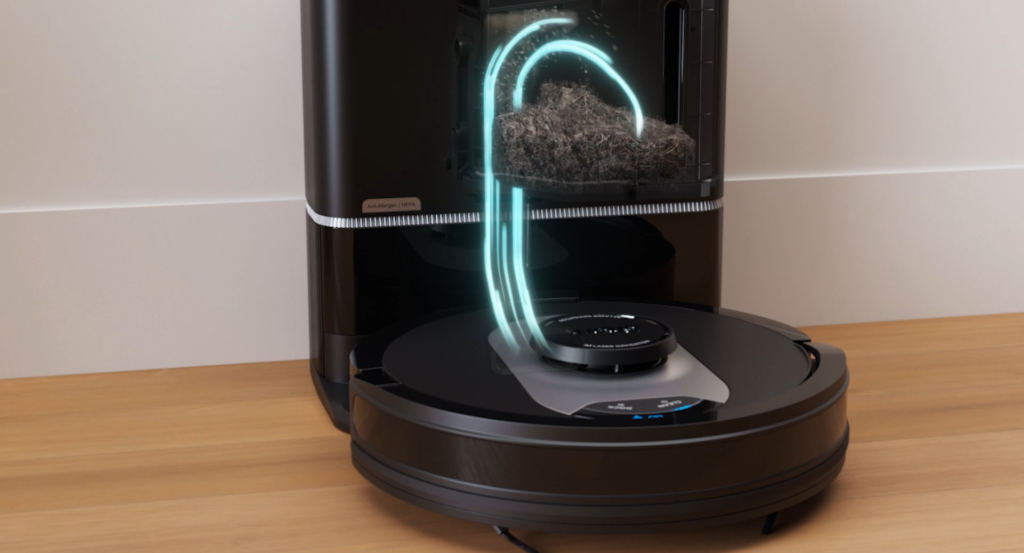
3. AI and Machine Learning Integration
Artificial Intelligence (AI) and Machine Learning (ML) are transforming the capabilities of robot vacuums, making them smarter, more adaptive, and highly efficient. In the early days, robot vacuums functioned primarily through basic programming and simple sensors. Today, with the integration of AI and ML, these devices can learn from their surroundings, adapt to unique floor plans, and even recognize objects and obstacles. This means that robot vacuums can perform more intelligently, effectively, and independently than ever, making them an invaluable addition to the smart home.
AI and ML integration in robot vacuums allows these machines to navigate more complex home environments, adapt to user preferences, and continuously improve their performance. Here’s a closer look at how AI and ML work in robot vacuums, the features they enable, and why they’re essential to achieving a truly smart cleaning experience.
How AI and Machine Learning Work in Robot Vacuums
AI and ML technologies empower robot vacuums to perform advanced functions that were previously impossible. While AI allows the vacuum to make real-time decisions based on environmental data, ML enables it to learn from past experiences and optimize future cleaning sessions.
- Data Collection and Processing
Robot vacuums with AI continuously gather data from their surroundings using sensors, cameras, and mapping technology. This data includes information on obstacles, room layouts, floor types, and high-traffic areas. The AI processes this data to make informed cleaning decisions, determining optimal cleaning paths and avoiding obstacles without human intervention. - Learning from Cleaning Sessions
With ML, robot vacuums “remember” previous cleaning sessions. Based on user interactions and past performance, they can recognize recurring obstacles, frequently dirty areas, and preferred cleaning zones. Over time, the vacuum becomes more efficient at navigating the home, reducing cleaning time, and covering areas that typically collect more dirt. - Real-Time Adaptation
AI-driven robot vacuums can adapt in real-time to changes in the environment. For instance, if furniture has been rearranged, the vacuum detects and adjusts to the new layout without getting stuck or needing manual guidance. This real-time adaptability makes AI-powered vacuums incredibly versatile and capable of handling dynamic spaces, which is especially beneficial in busy households.
Key Features Enabled by AI and Machine Learning
- Obstacle Recognition and Avoidance
AI-equipped robot vacuums are capable of identifying and avoiding obstacles. This is achieved through computer vision, a form of AI that enables the robot’s camera to “see” and recognize objects like toys, socks, power cords, and furniture. By distinguishing obstacles from typical floor debris, the vacuum can avoid getting tangled or stuck, ensuring a smoother and more efficient cleaning process. Some advanced models can even recognize specific objects and alert the user through a connected app. - Customized Cleaning Routines
With ML, robot vacuums can develop customized cleaning schedules based on user habits and preferences. For example, if the vacuum detects that the kitchen tends to be dirtier in the evening, it may suggest cleaning this area at that time. Similarly, in households with pets, the vacuum may recognize patterns of hair buildup and adjust its suction power and frequency of cleaning accordingly. - Efficient Multi-Room Navigation
AI-powered navigation enables robot vacuums to understand the layout of a multi-room space better. With the help of AI and stored mapping data, the vacuum can navigate from room to room without confusion, ensuring comprehensive coverage. Unlike traditional models, which might struggle with complex layouts, AI-driven vacuums can identify specific rooms, plan efficient cleaning paths, and remember previous sessions, making them ideal for larger, more complicated homes. - Smart Dirt Detection and Focused Cleaning
AI integration allows some robot vacuums to identify high-traffic or dirt-prone areas, such as entryways or around dining tables, and focus extra attention on these spots. This smart dirt detection means that the vacuum can prioritize heavily soiled areas and allocate additional cleaning resources to ensure a more thorough clean. The vacuum may even automatically switch to a higher suction power or specific cleaning mode when it detects a concentrated area of debris. - Object Classification and Advanced Alerts
Some high-end robot vacuums use AI for object classification, distinguishing different obstacles and responding accordingly. For example, the vacuum can recognize obstacles like pet waste, which it knows to avoid entirely, or objects it can clean around safely. Suppose an unusual object appears in its path. In that case, the vacuum can notify the user’s smartphone app, providing a real-time alert and even a photo of the obstacle.
Benefits of AI and Machine Learning Integration
- Increased Efficiency and Coverage
AI and ML make robot vacuums more efficient by covering every inch of the floor while avoiding obstacles that could slow them down. They can learn the optimal cleaning paths and reduce the time spent on each session. This translates to better cleaning coverage, particularly in homes with complex layouts or larger floor spaces. - Personalized Cleaning Experience
AI and ML enable robot vacuums to tailor their performance to each home and user. By learning user habits, preferred cleaning times, and high-traffic areas, the vacuum provides a truly personalized cleaning experience. It can automatically adapt to suit the unique requirements of each household, ensuring that cleaning sessions are as effective and convenient as possible. - Reduced Maintenance and Fewer Interruptions
With advanced obstacle recognition, AI-powered robot vacuums get stuck less frequently, which means fewer interruptions and less need for manual intervention. By avoiding common obstacles, they can clean uninterrupted, minimizing the time spent rescuing the vacuum from cords or toys. In addition, machine learning capabilities allow the vacuum to avoid these obstacles proactively, further reducing maintenance. - Enhanced Performance in Complex Environments
Homes with children, pets, and frequently moved furniture can challenge basic robot vacuums. However, AI and ML empower vacuums to recognize changes, handle unpredictable environments, and perform well in even the busiest households. This makes AI-driven vacuums especially useful in dynamic and high-traffic homes. - Future-Proof Technology with Regular Updates
Many robot vacuums with AI capabilities receive regular software updates that improve performance, add features, and refine obstacle recognition and mapping algorithms. As AI and ML evolve, these vacuums can adapt to new trends, furniture arrangements, and household needs. The future-proof aspect of AI means that users can benefit from continual improvements without needing to replace the entire vacuum.
Why AI and Machine Learning Are Game-Changers
Integrating AI and machine learning in robot vacuums has transformed them from basic cleaners into intelligent devices capable of adapting to the complexities of a real home environment. This technology allows the vacuum to learn and respond to a home’s unique layout, objects, and cleaning requirements, providing a personalized cleaning experience that is unprecedented in convenience and efficiency.
With AI and ML, robot vacuums can understand and adapt to the individual characteristics of each home, optimizing their cleaning performance with each use. They’re better equipped to navigate complex spaces, avoid obstacles, and customize cleaning routines to fit the user’s lifestyle. In short, AI and ML enable robot vacuums to be smarter, more effective, and more self-sufficient, making them essential for anyone seeking a fully automated, hassle-free cleaning solution.
As AI and machine learning technologies advance, we can expect even more impressive capabilities in future robot vacuum models. With ongoing improvements in object recognition, mapping accuracy, and integration with other smart home devices, AI-powered robot vacuums are set to become even more intelligent and user-friendly. For now, though, they represent a cutting-edge feature that has truly revolutionized how we think about automated home cleaning.
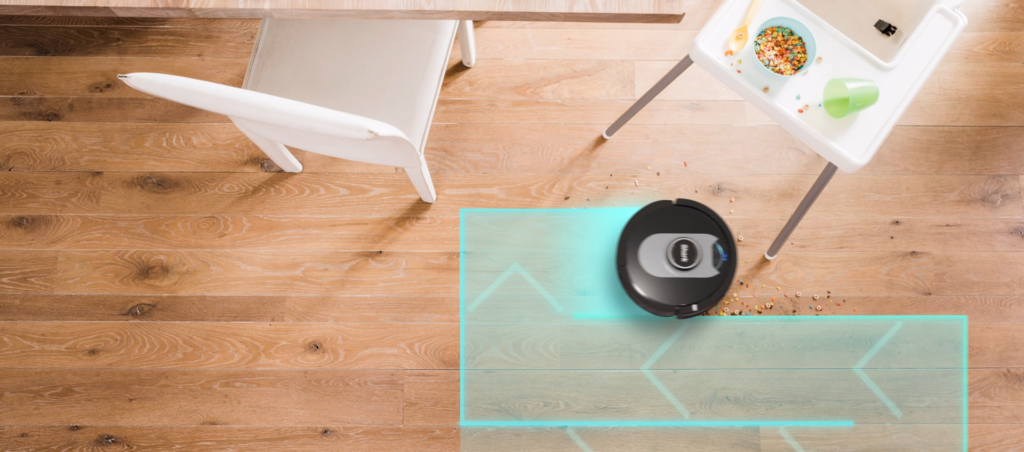
4. Advanced Suction and Cleaning Modes
One of the most critical aspects of any vacuum cleaner, including robot models, is its suction power and the variety of cleaning modes it offers. Recent advancements in suction technology have propelled robot vacuums into a new realm of effectiveness, allowing them to tackle messes that previously required a traditional vacuum. Alongside powerful suction, manufacturers have developed specialized cleaning modes tailored for specific surfaces and dirt levels, making today’s robot vacuums far more versatile than their predecessors.
With advanced suction systems and customizable cleaning modes, robot vacuums can handle various flooring types, debris sizes, and cleaning challenges. Whether it’s lifting fine dust from hardwood, grabbing pet hair from carpets, or tackling a high-traffic area, these features make modern robot vacuums highly adaptable and efficient. Here’s an in-depth look at how advanced suction and cleaning modes work, the benefits they offer, and why they’re an essential feature for top-performing robot vacuums.
How Advanced Suction Technology Works
Robot vacuums with advanced suction technology are designed to adjust their power levels automatically based on the surface and amount of debris they detect. Here’s a closer look at the key elements behind this technology:
- Variable Suction Control
Advanced robot vacuums often come with variable suction power that can be adjusted automatically or manually. The vacuum detects the type of flooring it’s on—such as carpet, tile, or hardwood—and adapts the suction level accordingly. Carpets, which trap dust and debris within their fibres, generally require higher suction, while hard floors can be cleaned effectively with lower suction. Variable suction control allows the vacuum to deliver powerful suction only when necessary, optimizing battery life without compromising cleaning quality. - High-Powered Motors
Today’s best robot vacuums use high-powered motors to generate substantial airflow to achieve truly effective suction. Some models even rival traditional vacuum cleaners regarding suction strength, allowing them to pick up stubborn particles like pet hair and fine dust. High-powered motors also contribute to more consistent suction over the vacuum’s lifespan, ensuring that performance doesn’t degrade with regular use. - Dual-sided and Multi-Surface Brushes
In addition to suction, advanced robot vacuums come with dual-sided and specialized roller brushes designed to work on multiple surfaces. These brushes work with the suction system, agitating and loosening dirt particles so they’re more easily vacuumed. Multi-surface brushes can seamlessly transition from tile to carpet, maintaining effective cleaning regardless of the flooring type. - Airflow Optimization and Filtration
Some high-end robot vacuums incorporate advanced airflow systems and filtration technologies that improve suction performance. By optimizing the airflow path, these vacuums minimize suction loss, even on longer cleaning runs. High-efficiency filters, often HEPA-grade, capture fine dust and allergens, preventing them from being released back into the air and ensuring a thorough, deep clean.
Key Cleaning Modes and Their Benefits
Today’s robot vacuums have various cleaning modes designed to tackle different cleaning challenges. Here are some of the most common modes and how they enhance the cleaning experience:
- Auto Mode (Adaptive Cleaning)
Auto mode is the default setting on most robot vacuums, and it’s designed to provide an all-purpose clean. In this mode, the vacuum uses its sensors and AI to determine the best cleaning path and suction level. Auto mode is ideal for regular maintenance, ensuring that your floors stay clean without requiring manual adjustments. For users who want a hands-off experience, auto mode perfectly balances efficiency and adaptability. - Spot Cleaning Mode
Spot cleaning mode is ideal for tackling concentrated messes. When you activate this mode, the robot vacuum will spiral out from a central point, thoroughly cleaning a small area before moving on. This mode is especially useful for quickly cleaning up after spills, pet accidents, or any area with a noticeable debris buildup. Spot cleaning mode can save time by focusing on the area needing attention rather than cleaning an entire room. - Edge Cleaning Mode
One common challenge for vacuum cleaners is effectively cleaning along edges and corners. Edge cleaning mode is specifically designed to address this issue. In this mode, the robot vacuum concentrates on the perimeter of a room, following walls closely and using side brushes to pull dirt and dust into the vacuum path. This mode is essential for capturing dust and debris accumulating along baseboards, ensuring a complete and polished clean. - Max or Turbo Mode
Max or Turbo mode is a high-suction setting designed for deep cleaning. This mode is particularly useful on carpets or in areas with heavy dirt buildup, as it increases the vacuum’s suction power to its highest level. Max mode is often activated automatically when the vacuum detects carpet or a particularly dirty spot, but it can also be manually enabled when a more thorough clean is needed. However, it does consume more battery power, so it’s generally reserved for short, intensive cleaning sessions. - Eco Mode (Energy-Saving)
Eco mode is the opposite of Turbo mode, designed for light cleaning and energy efficiency. In Eco mode, the vacuum reduces its suction power to conserve battery life, making it ideal for hard floors with minimal dust or debris. This mode is particularly useful for routine maintenance in homes with mostly hardwood or tile floors, where less intensive cleaning is sufficient. Eco mode allows for extended cleaning sessions without frequent recharging, making it a good option for larger homes. - Carpet Boost Mode
Some robot vacuums have a specialized Carpet Boost mode that automatically increases suction when the carpet is detected. This mode is invaluable for homes with both hard floors and carpets, as it delivers the right amount of suction for each surface. Carpet Boost mode ensures that carpets get a deeper clean, while the vacuum saves energy and battery life on hard floors.
Benefits of Advanced Suction and Cleaning Modes
- Enhanced Cleaning Precision and Coverage
With advanced suction control and various cleaning modes, robot vacuums can deliver a tailored cleaning experience for each room. The ability to adjust suction and mode based on surface type or mess level means the vacuum spends time and energy where it’s needed most, ensuring a more thorough and targeted clean. - Effective Pet Hair and Allergy Control
Homes with pets or allergy sufferers benefit greatly from advanced suction technology. High-powered suction and specialized modes, like Max mode or Carpet Boost, can capture and remove pet hair, dander, and fine allergens from carpets and furniture. For allergy sufferers, HEPA filtration combined with strong suction ensures that allergens are trapped, creating a cleaner and healthier home environment. - Improved Battery Efficiency and Longevity
The option to adjust suction levels helps conserve battery life. The vacuum can operate in Eco mode or at reduced suction on hard floors and only ramp up power when necessary. This optimization not only prolongs each cleaning session but also extends the battery’s overall lifespan, making the vacuum more efficient in the long run. - Versatility for Different Cleaning Needs
With various modes to choose from, advanced robot vacuums can adapt to different cleaning tasks, from daily maintenance to deep cleaning. Whether it’s removing stubborn pet hair or providing a quick clean before guests arrive, the variety of modes ensures that the vacuum is versatile enough to meet a wide range of cleaning needs, enhancing its overall value. - Reduced Need for Manual Intervention
The specialized modes make robot vacuums more autonomous, reducing the need for user intervention. Edge mode ensures thorough corner cleaning, Carpet Boost handles carpets without switching settings, and Spot cleaning can tackle unexpected messes—all without manual adjustment. This automation allows the vacuum to operate independently, saving time and effort for the user.
Why Advanced Suction and Cleaning Modes Are Game-Changers
The introduction of advanced suction and specialized cleaning modes has made robot vacuums more than just simple floor cleaners; they’re now versatile and efficient tools for comprehensive home cleaning. These features make robot vacuums adaptable to various home environments and cleaning needs, turning them into viable options for everything from light dusting on hardwood to deep cleaning of carpets.
For those with pets, allergies, or busy schedules, the power of advanced suction combined with the right cleaning mode makes a difference in maintaining a clean and healthy home. Robot vacuums with these features offer the same performance as traditional vacuums but with the added benefit of automation and hands-free operation. As technology advances, we can expect even more powerful suction capabilities and increasingly sophisticated modes, allowing robot vacuums to handle an even wider array of cleaning tasks and challenges.
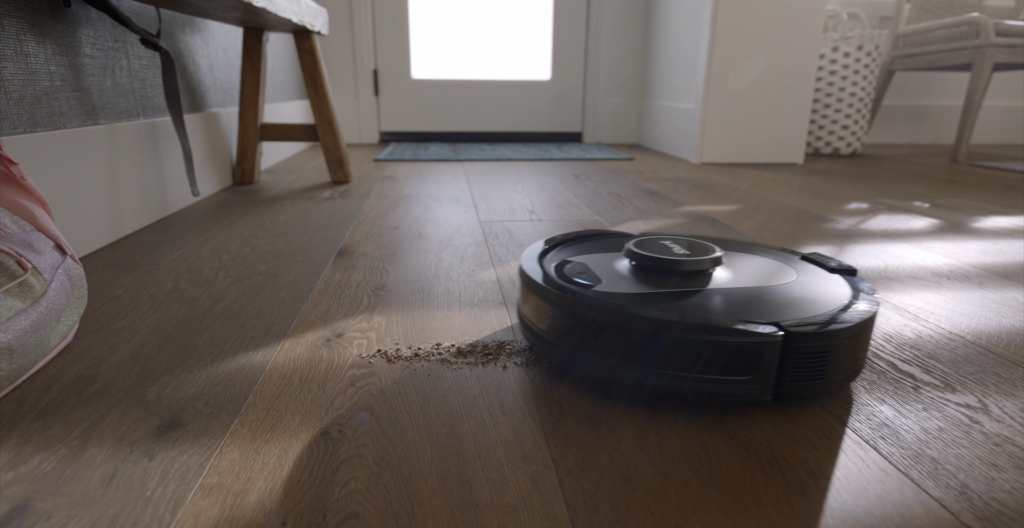
5. Voice Control and Smart Home Integration
Integrating voice control and smart home compatibility has significantly elevated the user experience for robot vacuum cleaners. As smart homes become more prevalent, the ability to control household devices using voice commands or through a unified smart home platform has revolutionized the way people interact with their appliances, including robot vacuums. Voice control and smart home integration provide convenience and enhance automation, making cleaning tasks even easier and more intuitive.
Today’s robot vacuums offer seamless integration with popular voice assistants like Amazon Alexa, Google Assistant, and Apple’s Siri, as well as compatibility with smart home hubs such as SmartThings and HomeKit. This means that instead of manually starting, stopping, or scheduling cleaning sessions, users can rely on voice commands or automated routines to control their vacuums. Let’s look deeper at how voice control and smart home integration work in robot vacuums, the benefits they offer, and why these features are changing the cleaning game for modern households.
How Voice Control and Smart Home Integration Work
- Voice Assistants and Virtual Helpers
Modern robot vacuums are compatible with major voice-controlled platforms like Amazon Alexa, Google Assistant, and Apple’s Siri. These virtual assistants enable hands-free operation, allowing users to issue commands such as “Alexa, start the vacuum,” “Hey Google, stop the cleaning,” or “Siri, schedule a cleaning session.” By simply speaking a command, users can initiate, pause, or stop cleaning, making it easier to integrate the vacuum into their daily routines without needing to touch the device itself or open an app. - Smart Home Hub Integration
Many robot vacuums are also compatible with smart home hubs, such as Samsung SmartThings, Apple HomeKit, or Google Home. These hubs act as central control points for various connected devices, enabling them to communicate with one another and work together to create a truly smart home environment. For example, you could set your vacuum to begin cleaning as soon as you leave the house or have it pause when you enter a room using the hub’s smart automation features. Integration with a smart home hub adds an additional layer of flexibility and convenience, making it easy to control and automate the vacuum alongside other smart devices in your home. - App-Based Control and Scheduling
Most modern robot vacuums have dedicated mobile apps that allow users to remotely control and customize their cleaning schedules. These apps can be connected to your voice assistant, allowing you to operate your vacuum through voice commands or set up automated routines based on the app’s scheduling features. Many apps allow users to set specific cleaning zones, monitor the vacuum’s progress, and even check on battery life and filter status—all from their smartphones. - Routine Automation and Triggers
One of the greatest advantages of smart home integration is the ability to automate routines and create triggers for specific cleaning actions. For example, you can program your robot vacuum to automatically start cleaning when everyone in the house leaves for work or school. You could also set up a trigger that begins cleaning when motion is detected in a room or when the temperature reaches a certain level. By integrating the robot vacuum into your home’s automation system, you can ensure that your vacuum works optimally without any manual input. - Smart Sensors and Real-Time Communication
Many robot vacuums with smart home integration are equipped with sensors that communicate in real time with other smart devices in the home. For instance, if you have a smart thermostat, the vacuum could be programmed to start cleaning once the temperature drops below a certain point, signalling that it’s the optimal time for cleaning. Additionally, if your vacuum detects an issue, like getting stuck or needing a filter change, it can notify your smartphone or integrated smart home system, allowing you to take action immediately.
Key Benefits of Voice Control and Smart Home Integration
- Hands-Free Operation and Convenience
Voice control offers hands-free operation, allowing you to start, stop, or schedule cleaning sessions without lifting a finger. Whether you’re cooking dinner, relaxing on the couch, or busy with other tasks, voice control means you don’t need to pause what you’re doing to manage your robot vacuum. Simply issue a command, and the vacuum will respond, taking cleaning off your to-do list without interrupting your day. - Seamless Integration with Other Smart Devices
A robot vacuum integrated into your smart home system doesn’t just stand alone—it works harmoniously with other connected devices. If you have other smart appliances like lights, thermostats, or security systems, you can create automated routines that make your home smarter. For instance, you can set up your vacuum to start cleaning as soon as the lights are turned off in a room or pause when a security camera detects movement. Smart home integration allows for a more holistic and connected living experience, where everything works together for optimal convenience and efficiency. - Automated Cleaning Schedules
Scheduling cleaning sessions becomes even more straightforward when the robot vacuum is integrated into a smart home ecosystem. You can set your vacuum to clean at specific times of the day—such as in the morning before you wake up or in the evening after you leave the house—without needing to manually start it. Integration with a smart home hub enables you to set schedules based on your daily routines, ensuring that cleaning happens automatically when it’s most convenient. - Real-Time Notifications and Monitoring
Integration with mobile apps and smart home systems means you can receive real-time notifications about your vacuum’s progress, battery status, or any issues that arise during cleaning. If the vacuum encounters a problem—such as being stuck, needing its bin emptied, or running low on battery—you’ll be notified instantly via your smartphone or smart home system. This feature adds a layer of peace of mind, ensuring you can address any issues immediately without needing to check on the vacuum physically. - Energy Efficiency and Smart Automation
By integrating voice control and smart home automation, your robot vacuum can function more efficiently, adjusting its cleaning behaviour based on other smart devices in the home. For instance, the vacuum could start cleaning when everyone leaves, ensuring it doesn’t run while the house is occupied or pauses when someone enters a room. This makes cleaning more efficient and helps conserve battery life and energy, ensuring the vacuum operates only when necessary.
How Voice Control and Smart Home Integration Improve User Experience
Voice control and smart home integration bring an unprecedented level of convenience and automation to the world of robot vacuums. Instead of manually operating your vacuum via a remote or smartphone app, voice control allows you to delegate cleaning tasks without lifting a finger. Whether cleaning specific rooms, setting up schedules, or controlling the vacuum from another room in your home, the process is streamlined and efficient.
Smart home integration allows your robot vacuum to become part of a larger system of connected devices, which can be synchronized with lights, thermostats, security cameras, and more. This synergy enables you to automate cleaning routines, set triggers for cleaning sessions, and even adjust the vacuum’s operation based on your preferences or specific events occurring in your home.
Voice control also enhances robot vacuums’ accessibility, making them easier to use for people with disabilities, busy individuals, or anyone looking for a more convenient and hands-off cleaning experience. Simply put, voice commands and smart home integration add intelligence and ease to robot vacuums, elevating their usefulness and making them an essential part of a modern smart home.
Why Voice Control and Smart Home Integration Are Game-Changers
The ability to control robot vacuums through voice commands and integrate them into a larger smart home system has changed how we interact with these devices. We no longer have to press buttons, open apps, or manually set schedules—voice control and smart home automation bring convenience and ease, making cleaning even simpler and more efficient.
With voice control, robot vacuums can be managed without interrupting daily activities, allowing for a smoother, more seamless cleaning experience. Smart home integration ensures that the vacuum is efficient and intelligently synchronized with other devices in your home, making it part of a broader ecosystem that enhances your overall home automation. For these reasons, voice control and smart home integration are game-changing features, setting the stage for the next generation of robot vacuums offering unparalleled convenience, intelligence, and automation.
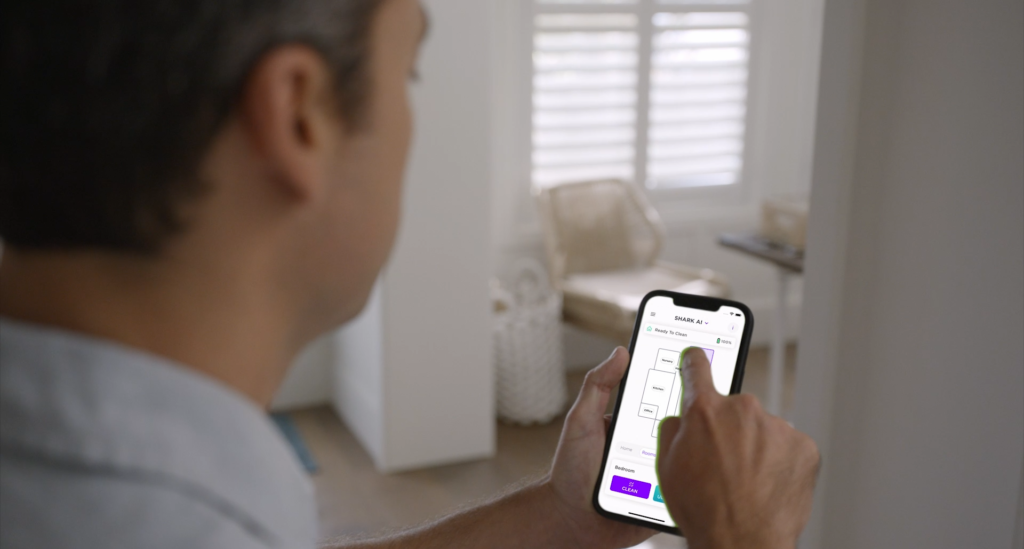
Conclusion
The advancement of robot vacuums has come a long way from their initial designs, evolving into sophisticated, smart, and highly efficient cleaning devices. As we’ve seen throughout this article, modern robot vacuums come equipped with game-changing features that make them not just a convenience but an essential part of any smart home. Features such as smart mapping and navigation, self-emptying bins, AI integration, advanced suction capabilities, and voice control/smart home integration are revolutionizing how we approach household cleaning. These innovations allow robot vacuums to tackle a wide range of cleaning tasks with minimal user input while providing a more personalized and hands-off cleaning experience.
One of the most significant aspects of today’s robot vacuums is their ability to adapt to various cleaning environments. Smart mapping and navigation capabilities have redefined how vacuums traverse and clean a space. They no longer rely on random movement; instead, they intelligently map out your home and efficiently clean the most effective paths, ensuring maximum coverage. Combined with advanced suction and cleaning modes, these vacuums can handle everything from quick touch-ups to deep cleans with ease, adapting suction power to different surfaces like carpet, hardwood, or tile. These versatile cleaning systems provide users with unparalleled flexibility, making them ideal for a variety of homes, from small apartments to multi-level houses.
Self-emptying bins are another remarkable feature that takes the hassle out of cleaning. You no longer need to manually empty the dustbin after every cleaning session, which can be both time-consuming and unpleasant. Self-emptying technology allows the vacuum to automatically dispose of collected debris into a larger container, saving time and reducing the frequency with which you need to intervene. This feature is especially beneficial for households with pets or high-traffic areas that accumulate dirt more frequently, ensuring the vacuum runs without interruption.
The integration of AI and machine learning has also enhanced the performance of robot vacuums, enabling them to learn and improve over time. These intelligent vacuums can analyze their environment, recognize obstacles, and refine their cleaning paths to optimize efficiency. Furthermore, AI-powered vacuums can even adjust their cleaning modes based on the types of dirt or debris they encounter, ensuring the best cleaning performance. This ability to adapt and learn makes modern robot vacuums not just smart but intuitive, offering a level of automation that goes beyond basic cleaning.
